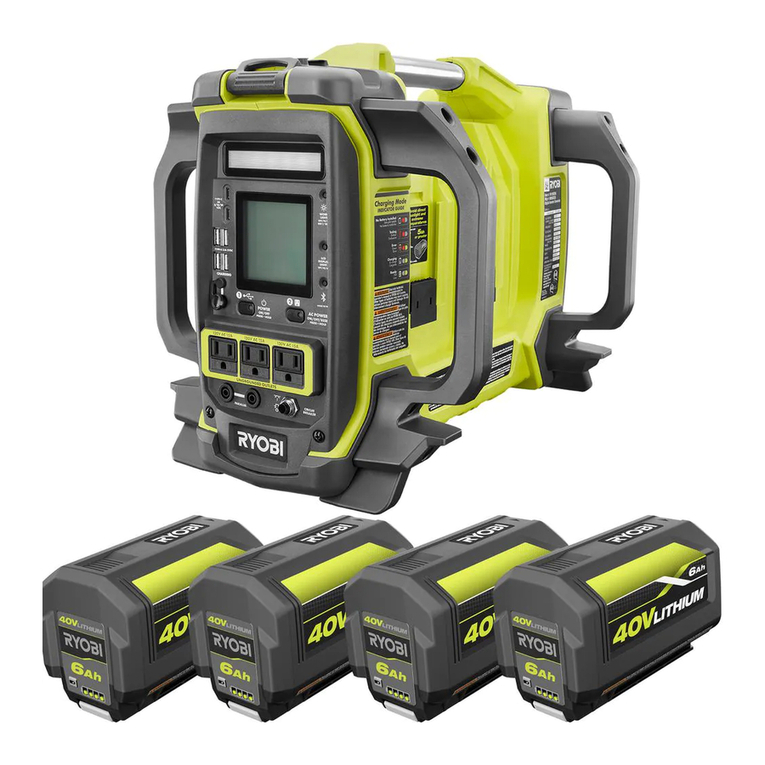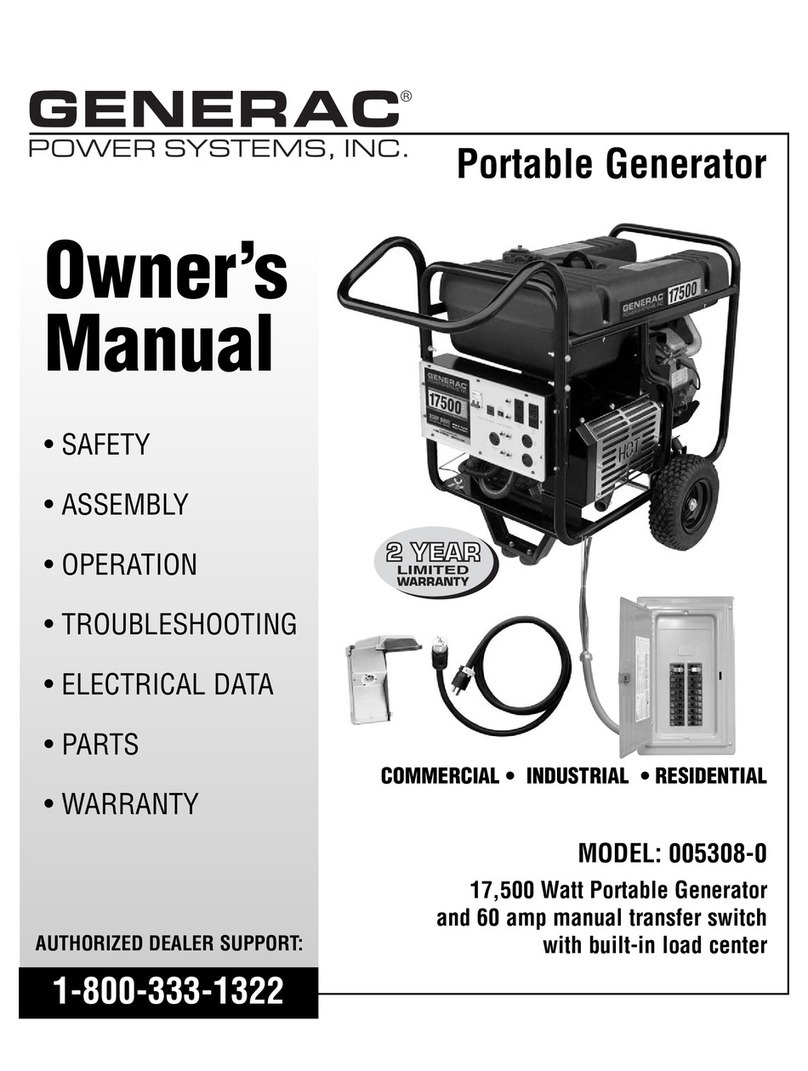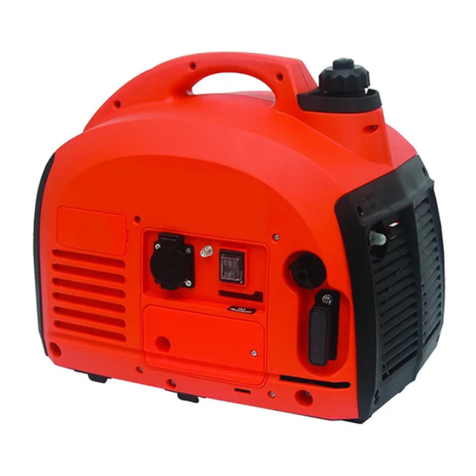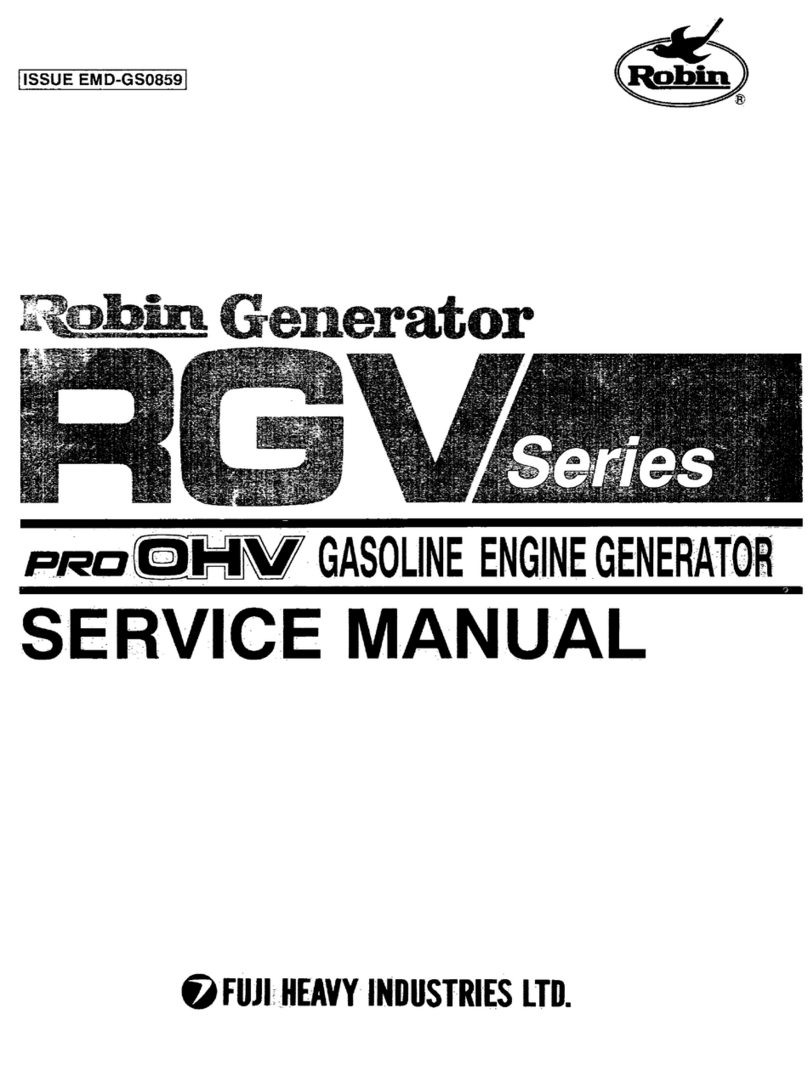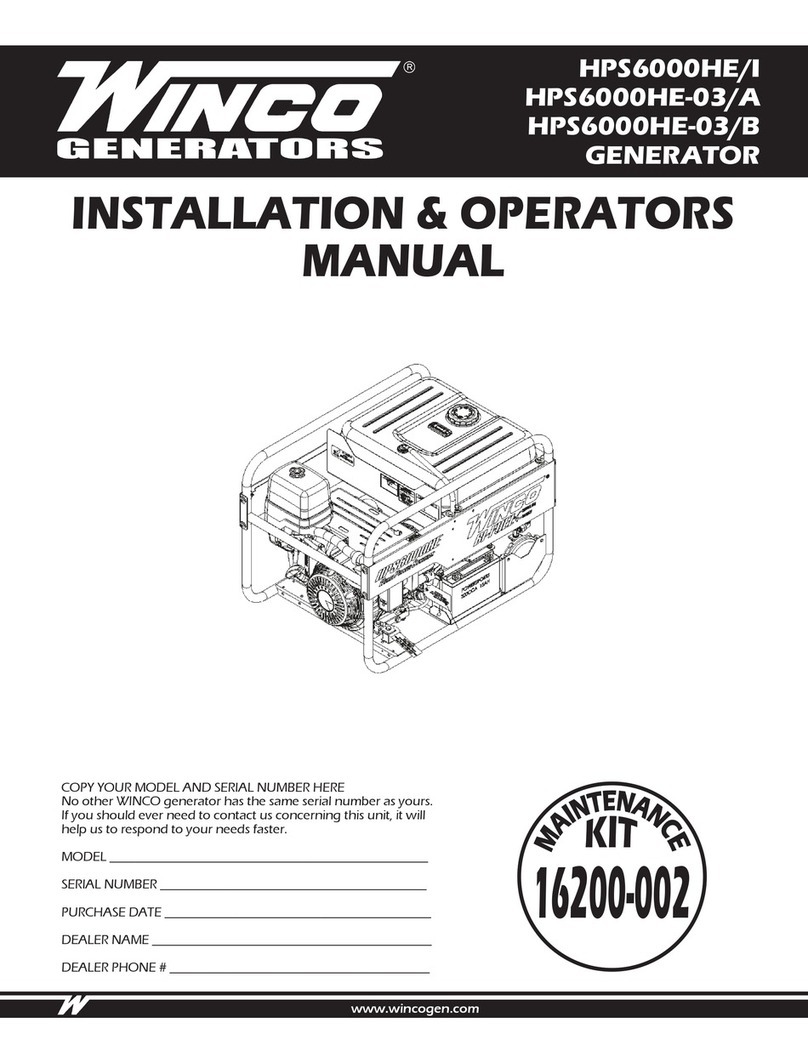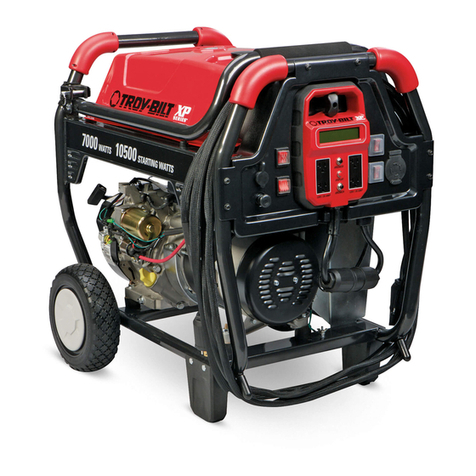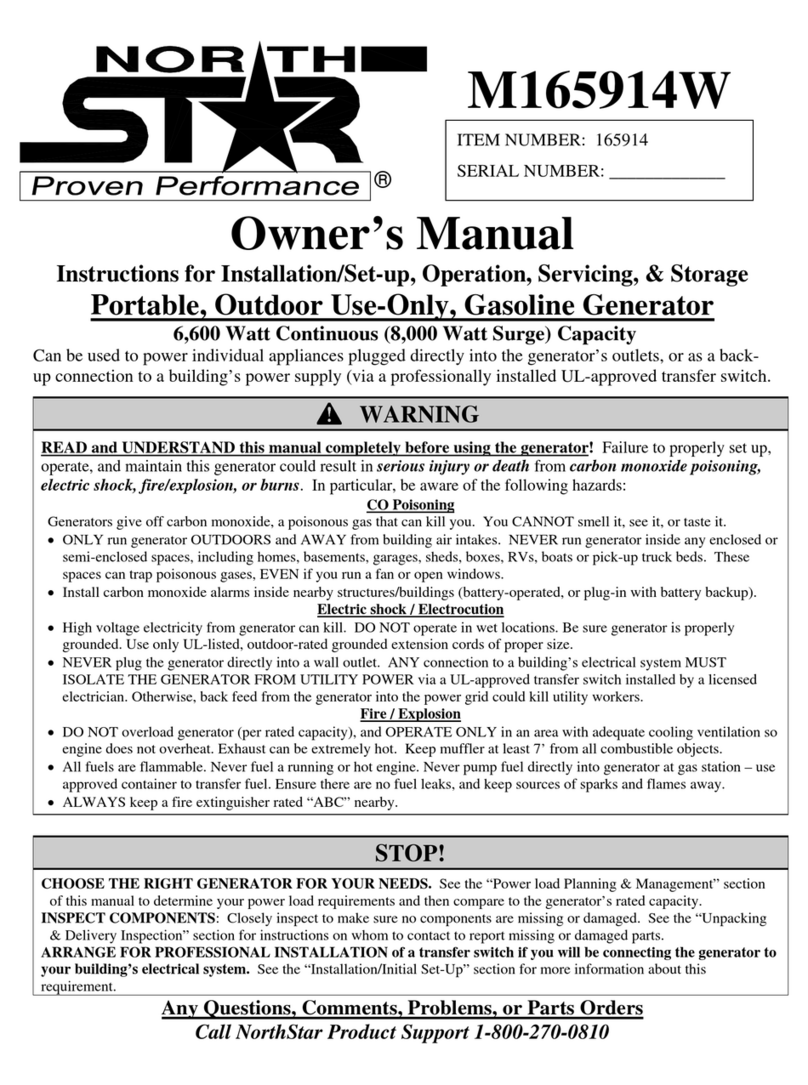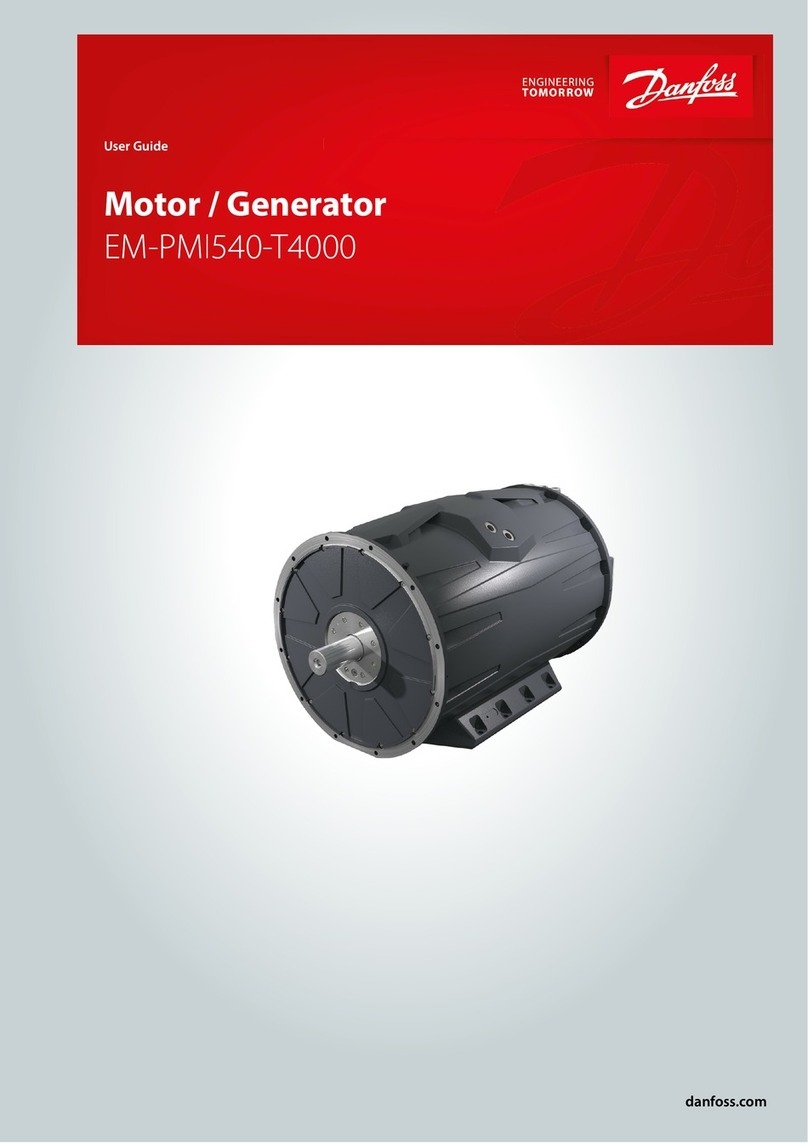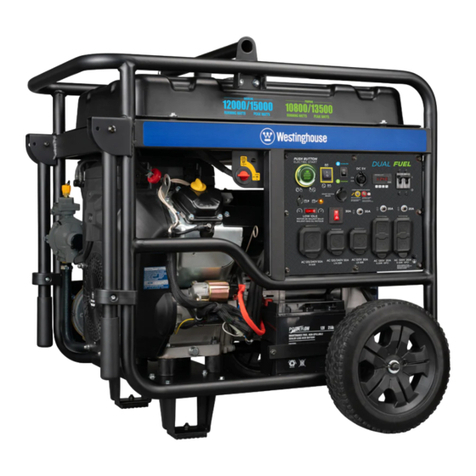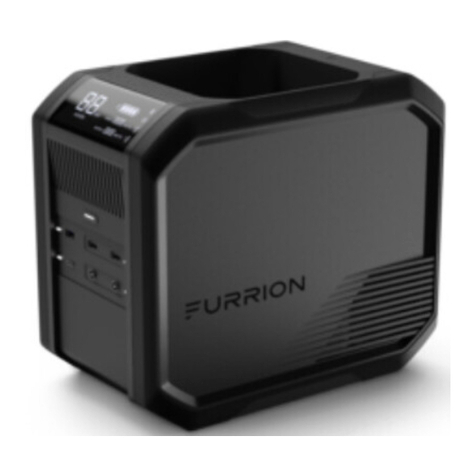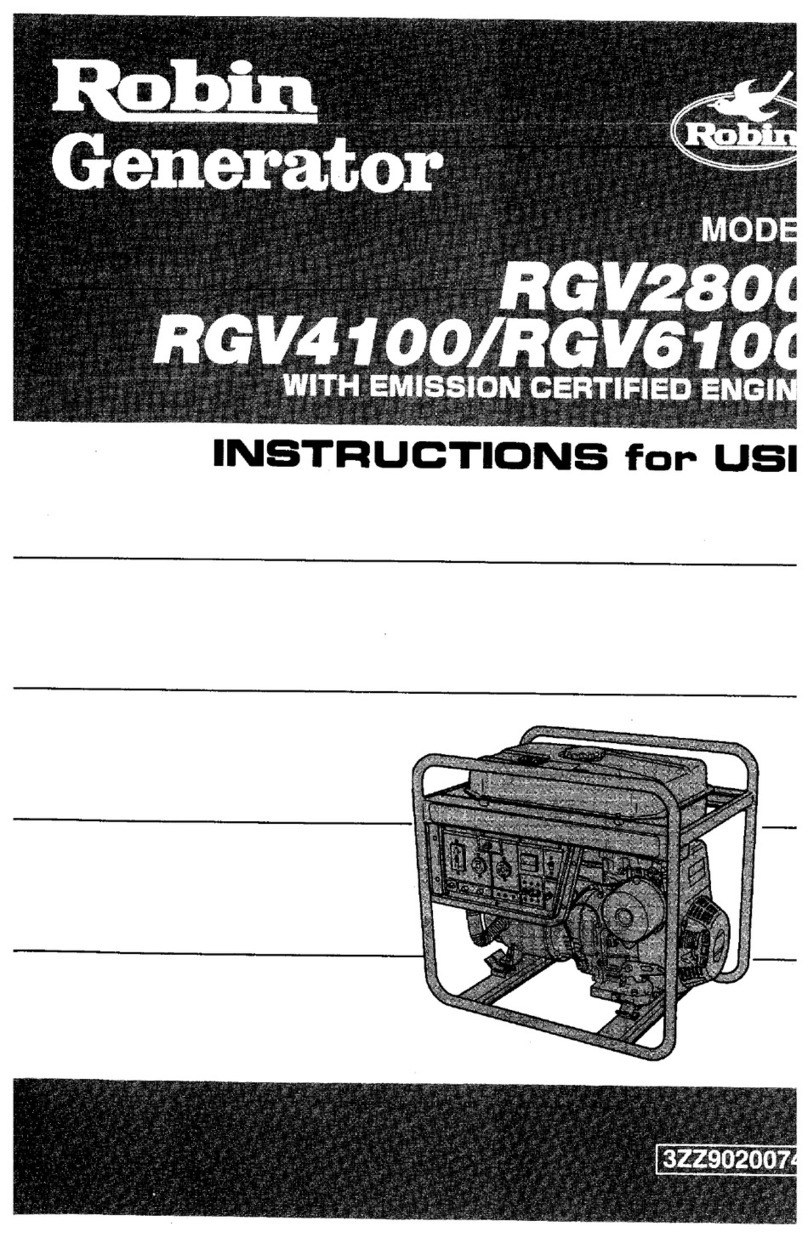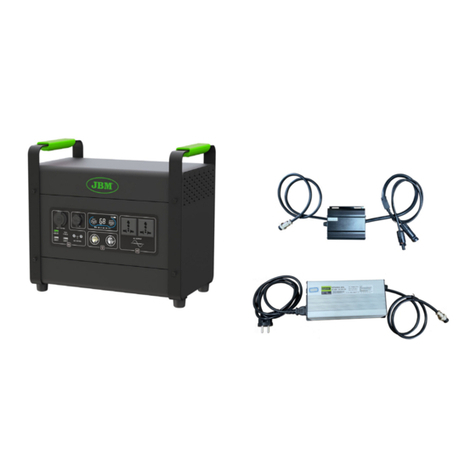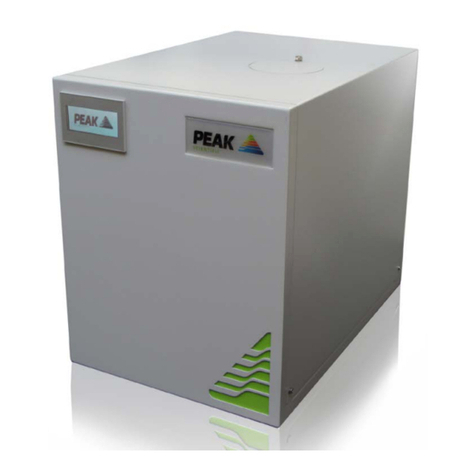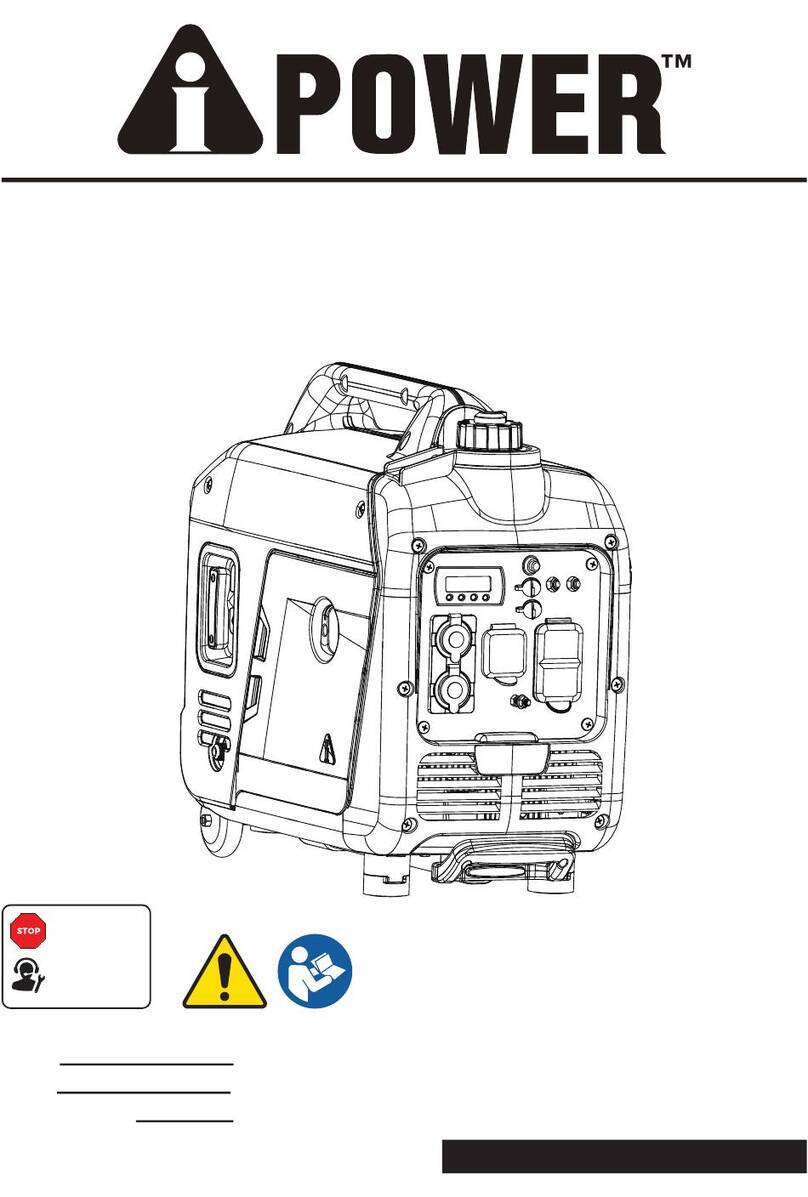GRAF & MEYER eXentro Charger C48 Instruction sheet

eXentro Charger C48
Safety and Installation Guideline
Sicherheitshinweise und Installationsanleitung
Guide d’installation et de sécurité
Retningslinjer for sikkerhed
Guía de seguridad
Linee guida per la sicurezza
Veiligheidsinstructies
Riktlinjer för säkerhet
Wytyczne dotyczące bezpieczeństwa
180160021Aa - NOT160014Aa – Ed. 1629

The manufacturer reserves specification privileges. Information in this manual is subject to change without prior notice or obligation.

3
English
Table of Contents
1. Important Safety Information 4
2. Declaration of Conformity 6
3. Warranty Period and Service 6
4. General information 6
5. Specifications 7
5.1 Environmental specifications
5.2 Electrical & mechanical specifications
5.3 Fuses
6. Installation 8
6.1 Front panel indicators
6.2 Rear panel connections
6.3 Internal view
6.4 Maximum current consumption and batteries
6.5 Rack mounting
6.6 Mains
6.7 Battery installation and connection
7. Operation 13
7.1 Battery test
7.2 Temperature compensation:
7.3 Battery low voltage protection:
7.4 Battery reverse connection protection:
8. Maintenance 13
9. Troubleshooting 14
10. Appendix 14
Sicherheitshinweise und Installationsanleitung 16
Guide d’installation et de sécurité 30
Vigtige sikkerhedsoplysninger 46
Información de seguridad importante 48
Informazioni importanti sulla sicurezza 50
Belangrijke veiligheidsinformatie 52
Viktig säkerhetsinformation 54
Ważne informacje dotyczące bezpieczeństwa 56
Dansk Español Italiano
Nederlands
Svenska PolskiFrançaisDeutsch

1. Important Safety Information
English
4
1. Important Safety Information
This product is intended for installation by professional installers only. This document is
intended to provide professional installers with basic installation and safety guidelines for the
eXentro Charger C48 in typical fixed installations. Please read this document before attempting
installation.
Warning: All products must be used in accordance with local, state, federal and industry
regulations. It is the installer’s responsibility to ensure installation of the unit/system
is performed in accordance with all applicable codes, including local building codes and
regulations. Consult the local authority having jurisdiction before installing this product.
Warning: To reduce the risk of fire or electrical shock, do not expose the product to rain
or moisture.
Caution: Do not mount the chassis in locations where condensation may occur.
Warning: Do not expose this apparatus to dripping or splashing, and do not place objects filled
with liquids such as vases, on or near the apparatus. As with any electronic products, use care
not to spill liquids into any part of the system. Liquids can cause a failure and/or a fire hazard.
The lightning flash with arrowhead symbol, within an equilateral triangle, is intended to alert the
user to the presence of uninsulated dangerous voltage within the system enclosure that may be of
sufficient magnitude to constitute a risk of electrical shock. Do not touch the input/output terminals
while the product is ON. Make all connections with the product OFF.
The exclamation point within an equilateral triangle, as marked on the system, is intended to
alert the user to the presence of important operating and maintenance instructions in this
installation guide.
Caution: Make no modifications to the product or accessories. Unauthorized alternations may
compromise safety, regulatory compliance and system performance.
Caution: This product shall be connected to an AC mains socket outlet with a protective
earthing (grounding) connection.
Caution: Do not place any naked flame sources, such as lighted candles, on or near the apparatus.
Warning: Contains small parts which may be a choking hazard. Not suitable for children
under age 3.
Note: Where the mains plug or appliance coupler is used as the disconnect device, such
disconnect device shall remain readily operable.
Note: The product must be used indoors. It is neither designed nor tested for use outdoors, in
recreational vehicles, or on boats.

English
1. Important Safety Information
5
Important Safety Instructions
1. Read these instructions.
2. Keep these instructions – for future reference.
3. Heed all warnings – on the product and in all product documentation.
4. Follow all instructions.
5. Do not use this apparatus near water.
6. Clean only with a dry soft cloth. Don’t use alcohol, ammonia, or other strong solvents/liquids.
7. Do not block any ventilation openings. Install in accordance with the manufacturer’s
instructions. To ensure reliable operation of the product and to protect it from overheating put
the product in a position and location that will not interfere with its proper ventilation.
8. Do not install near or directly on top of any heat sources, such as radiators, heat registers,
stoves, or other apparatus (including amplifiers) that produce heat.
9. Do not defeat the safety purpose of the polarized or grounding-type plug. A polarized plug has
two blades with one wider than the other. A grounding-type plug has two blades and a third
grounding prong. The wider blade or third prong is provided for your safety. If the provided plug
does not fit in your outlet, consult an electrician for replacement of the obsolete outlet.
10. Protect the power cord from being walked on or pinched, particularly at plugs, convenience
receptacles, and the point where they exit from the apparatus.
11. Only use attachments/accessories specified by the manufacturer.
12. Use only with the cart, stand, tripod, bracket, or table specified by the manufacturer
or sold with the apparatus. When a cart is used, use caution when moving the
cart/apparatus combination to avoid injury from tip-over.
13. Unplug this apparatus during lightning storms or when unused for long periods of time to
prevent damage to this product, if allowed by local standards.
14. Refer all servicing to qualified service personnel. Servicing is required when the apparatus has
been damaged in any way such as power-supply cord or plug is damaged; liquid has been spilled
or objects have fallen into the apparatus; the apparatus has been exposed to rain or moisture,
does not operate normally, or has been dropped. Do not attempt to service this product yourself.
Opening or removing covers may expose you to dangerous voltages or other hazards. Please call
your dealer to be referred to an authorized service center near you.
15. To prevent risk of fire or electric shock, avoid overloading wall outlets, extension cords, or
integral convenience receptacles.
16. Do not let objects or liquids enter the product – as they may touch dangerous voltage points or
short-out parts that could result in a fire or electric shock.
17. See product enclosure for safety related markings.
18. No naked flame sources, such as lighted candles, should be placed on the apparatus.
19. The mains plug is used to disconnect the device and it shall remain readily operable. To
completely disconnect the power input, the mains plug of the apparatus shall be disconnected
from the mains and the DC input plug (if applicable) should be disconnected.
20.Do not allow the unit to exceed the maximum operating ambient temperature of 40° C. Be aware of
conditions in an enclosed rack that may increase the temperature above room ambient conditions.
21. This equipment is designed to be connected to the 230 V public distribution network.
To avoid any risk of electric shock, all INTERVENTIONS must be carried out with DISCONNECTED
MAINS SUPPLY. An easily accessible isolating switch must therefore be installed outside of the
cabinet. A double pole isolating switch must be installed in the batteries circuit.

2. Declaration of Conformity
English
6
2. Declaration of Conformity
The manufacturer of this product declares that this product is compliant with the Low Voltage
and EMC directives (immunity and emission) and is in accordance with the following standards:
EN 60950-1 (2006) + A11 (2009) + A1 (2010) + A12 (2011) + A2 (2013))
EN 61000-6-1 (2007)
EN 61000-6-2 (2005)
EN 61000-6-3 (2007)
EN 61000-6-4 (2007) + A1 (2011)
EN 55022 class B (2007)
This products is also compliant with the following trade standards:
EN 54-4 (1997) + A1 (2002) + A2 (2006) Fire detection and fire alarm systems -
Part 4: power supply equipment.
DoP number: 0333-CPR-075383-4. Year of CE marking: 2016.
3. Warranty Period and Service
The eXentro Charger C48 is warranted with a 2 year warranty. It is strictly limited to reimbursement
or replacement (at our discretion and without compensation of any sort) of parts recognised as a
fault by our services, following return of the product at the buyer's expense.
The replacement or repair of equipment is only possible in our service center. In order to allow
customers to benefit from the latest technical improvements, the vendor reserves the right to
make all necessary modifications to its products.
Batteries are not included in the warranty.
4. General information
This product is declared as Power Supply Equipment (PSE), as defined in the EN 54-4 standard
and can be used in a Voice Alarm System as backup power source. This Safety and Installation
Guideline includes instructions for the installation, commissioning and maintenance of
the battery charger. In order to work properly, we recommend to carefully read and follow
all instructions.
RECYCLE
LEAD
RETURN

English
5. Specifications
7
5. Specifications
5.1 Environmental specifications
5.2 Electrical & mechanical specifications
5.3 Fuses
Operating temperature: -5 °C to +45 °C at 12A
Operating relative humidity: 20 to 95 % without condensation
Altitude: > over 2000 m. Max operating temperature decreases 5°C
every 1000 m. Cooling operates transversally.
Storage temperature: -25 to +85 °C.
Storage relative humidity: 10 to 95 %.
Mains input voltage (single-phase) 220-240 VAC / 50-60 Hz
Power consumption at full load 760 W
Maximum primary current @ 195 V 4A
Protection Class Class 1
Neutral and earthing systems TT, TN, IT
Mains circuit breaker two pole circuit breaker (D curve) to be provided upstream
Rated output voltage 48 VDC
Floating voltage (half load) 54.4 VDC +/-0.5%
Maximum output current
(total for all 9 outputs) 150A total
Main outputs (6) 40A max.
Auxiliary outputs (3) 5A max.
Rated output current (without
reducing battery capacity) 12A max.
Dimensions (wxhxd) 483 x 44.5 x 310 mm (19”,2U high)
Weight 6 kg
F1 Mother board (AC mains input) 8A, type: T(slow), breaking capacity 1500A, size: 5x20
F8 Mother board (to battery) 12.5A, type: T (slow), size: 5x20
F1 to F6 main outputs 32A, type: gG, size: 10x38
Faux1 to Faux3 auxiliary outputs 5A, type: F (fast), size: 5x20
External Battery fuse (not included) Ib max (when mains not present), type gG

6. Installation
English
8
6. Installation
6.1 Front panel indicators
NOTE: failsafe contacts: NC-C-NO / 1A@24 VDC or, 0.5A@120 VAC.
LED Green Yellow
1230 VAC INPUT OK, no fault on input indicates a fault when:
• mains voltage below 165 VAC +/-5%
(when mains switch is ON)
• mains is not present or below 185 VAC
+/-5% (when unit switched OFF)
• mains fuse (F1) is blown
• battery charger is broken
• Internal temperature is too high
A failsafe contact closure will also
be trigered (after a delay of 5 seconds)
248 VDC INPUT OK, no fault on input indicates a fault when:
• battery is not present
• internal battery impedance is too high
• battery voltage is below 47 VDC +/-3%,
when mains is still present.
A failsafe contact closure will also
be trigered
348 VDC
OUTPUT OK, no fault on input indicates a fault when:
• there is no voltage on one or more outputs
(all 9 outputs are monitored).
A failsafe contact closure will also
be trigered
1
2
3

English
6. Installation
9
1. Mains power input socket
2. Auxiliary output terminals : 2.5 mm² max.
3. Output contacts : 1.5 mm² max.
4. Main outputs (outputs 1 to 6): 16 mm² max.
5. Temperature sensor input
6. Battery connection : 16 to 50 mm² max.
6.3 Internal view
Below picture shows the location of the different fuses and jumper
(for the battery impedance setting).
6.2 Rear panel connections
1. Auxiliary output fuses 1-3 (5A)
2. Main output fuses F1 to F6 (32A)
3. Battery/Power supply fuse F8 (12.5A)
4. Jumper for internal battery impedance selection
5. AC mains power fuse F1 (8A)
(for the battery impedance setting).
1
3 4 5 6
2
Important:
the openings provided
in the cabinet must be
kept free. Do not create additional
openings because this can cause
the device to malfunction and
voids the warranty.
1
2
3
4
5

6. Installation
English
10
Below picture shows a block diagram of the battery charger:
It is recommended to install a fuse (with low resistance) between the battery charger and
the battery!
output 9
output 8
output 7
output 6
output 5
output 4
output 3
output 2
output 1
alarm output
Auxiliary outputs board
Main outputs board
Daughter
Board
Display
Power and control board
L
Temperature sensor
Battery

English
6. Installation
11
6.4 Maximum current consumption and batteries
NOTE: If the amplifiers, used in the Voice Alarm system, are not powered from the same AC
mains as the Power Supply Equipment is powered from, a failure of the AC mains supply to the
amplifiers shall result into a fault warning to the voice alarm system!
Normal operating mode: the Power Supply Equipment recharges the batteries and maintains
them when they are fully charged. The maximum current that can be provided to all 9 user
outputs in total is ‘Imax a’.
Back-up operating mode: the total operating current is provided by the batteries and may not
exceed ‘Imax b mains not present’.
Imax a: maximum available current which may be drawn continuously while charging the battery.
Imax a = 12 A – C/20 (C/20 = charge current, C = battery capacity in Ah).
Imax b (mains present): maximum available output current which may be drawn a short time,
during which the battery may not be charged, but not discharged.
Imax b = 12 A
Imax b (mains not present): maximum available current which may be drawn from the batteries
when the mains supply is not available.
Imax b = 150 A if the jumper is set to '75' / Imax b = 100A if the jumper is set on '50'
The jumper is set to the ‘50’ position as default factory setting. Any other position of the jumper
operates like ‘50’ except the ‘75’ position.
Back-up duration and battery size
To determine the battery size, look up the requirements for ‘standby time’ and ‘emergency time’
in your local system/application standards. Do not forget to multiply the calculated battery
capacity by a safety factor (for capacity reserve and to compensate battery aging).
• If Imax b (mains not present) is > 100 A, use batteries with a capacity of 86 to 225 Ah (max.) and
set daughter board jumper to ‘75’.
• If Imax b (mains not present) is < 100 A, use batteries with a capacity of 65 to 225 Ah (max.) and
set daughter board jumper to ‘50’.
NOTE: is it not allowed to connect batteries in parallel to obtain a higher capacity. Only a series
connection of four (4) 12 V batteries (with a max. capacity of 225 Ah each) is allowed!
The following batteries have been tested with this battery charger and are approved to use:
• Yuasa NPL series
• Powersonic GB series
• ABT TM series
• Enersys VE series
• Effekta BTL series
• Long GB series.
• Fiamm FG series
• Sun FT series
See below picture for jumper setting:
Jumper

6. Installation
English
12
6.5 Rack mounting
The battery charger and batteries have to be installed in a 19” rack that complies with Class 3k5
of EN60721-3-3:1995 +A2:1997 and IP30 of EN60529:1991+A1:2000. Make sure all the ventilation
openings of the unit are not blocked. Make sure that the installed unit is tightly fixed to the
19” rails of the rack (at the front); when required, use brackets to accommodate the installation
so the rear of the unit is also fixed to the 19" rack.
6.6 Mains
Use a double pole D curve circuit breaker (4A for 24 V version and 6A for 48 V version) to connect
the power supply to the mains circuit.
6.7 Battery installation and connection
Use a double pole isolating switch (e.g. isolator or disconnecting switch) by connecting the
batteries to the supply. An additional fuse is also recommended to protect this circuit.
In order to avoid any electrical damage, the cables used to connect the batteries must precisely
match with the supply configuration (100 or 150A) : maximum sheath temperature, cross
section, allowed current, maximum voltage.
The battery temperature sensor must be placed as close to the battery as possible but doesn’t
need to be in contact with it. It may also be fixed on one of the battery cables (close to the
batteries) by mean of two ty-wraps.
Make sure that the four batteries are tightly fixed to the 19” rack, including the battery tray (if needed)
and that they can not move around freely. Use of the special brackets to mount the batteries is
mandatory (2 brackets are included with the 19" rack and 2 with the optional battery tray).
Battery wiring instructions:
Every 4 hours the battery charger measures the internal resistance of the batteries including
the wiring connections and fuse. The threshold to triger a fault is 26m Ω±10% at 48 V when
the jumper is set to '75' and 40 m Ω±10% at 48 V if the jumper is set to '50'. When this threshold
is exceeded this will be signalled as a battery fault and means that the power supply with its
associated battery will not have the required back-up duration in case of an AC mains failure.

English
7. Operation
13
To avoid initiating this fault, make sure to follow and include the next steps:
• Use authorized batteries
• Do not exceed the lengths of the cable (see appendix)
• Ensure proper connections.
Connect the battery wires to the terminal strip, but do not connect the battery terminals yet.
When all electrical connections are made (mains, loads and batteries):
1. Close the upstream mains circuit-breaker.
2. Check the load output voltage – when OK – turn the battery charger OFF again
3. Connect the battery terminals – turn on the battery charger again.
Your battery charger is operating correctly when all 3 LEDs on the front of the PSE are green.
If not, refer to the Trouble shooting section at the end of this manual.
7. Operation
7.1 Battery test
The battery presence test is performed every 30 seconds for the first 20 minutes after
commissioning and every 15 minutes afterwards. As soon as a fault is detected, this test is
performed every 30 seconds until 20 minutes after the fault is disappeared/solved.
The impedance measurement test occurs every 4 hours when AC mains is present and when the
total output current is < 12A. The impedance limit value is 26mΩ±10% at 48 V (jumper at ‘75’) or
40 mΩ±10% at 48 V (jumper set at ‘50’).
7.2 Temperature compensation:
A battery voltage compensation system maintains the charge characteristics within the limits
specified by the battery manufacturer across the entire operational temperature range. This
requires the temperature sensor to be installed.
7.3 Battery low voltage protection:
• The battery low voltage protection threshold is 43.2 V ±3 %.
• The element causing the cut-out will be in the + position.
7.4 Battery reverse connection protection:
• During start-up: the battery relays will not close when batteries are reversely connected
• During operation: fuse F8 will blow when batteries are reversely connected
8. Maintenance
Only to be done by authorized and qualified personnel!
In order to ensure maximum and durable service of this product, yearly maintenance of this
product is highly recommended. Make sure the product is installed in a dry and ventilated
location. Make sure to power OFF the unit before any maintenance (like cleaning and dust
removal) is performed. The manufacturer is not responsible in any case for damages associated
with improper use or incorrect maintenance of the equipment.

9. Troubleshooting
English
14
For battery replacement and service; refer to the battery vendor specifications and replacement
recommendations.
Replacing the original battery with a battery of incorrect type may result in an explosion hazard.
Used batteries must be disposed in compliance with local recycling requirements.
9. Troubleshooting
Only to be performed by authorized and qualified personnel!
If the Power supply does not deliver voltage on the outputs
• Check mains presence on the mains terminal strip
• Check the internal fuses
• Check the voltage value on output terminals
• The voltage on the battery cables must be identical to that of the load
• Check that each 2 V resp. 6V resp. 12 V battery block has a voltage greater than or equal to 1,9 V
resp. 5,75 V resp. 11.5 V.
• Repeat the measurement after having disconnected the load and the battery
• Recheck the signalling of the LED indicators
• If all the steps are validated, check the compatibility of your load
If the battery indicator LED remains yellow
• Check mains presence on the mains terminal strip
• Check if the battery voltage is between 40 V and 60 V
• Check the battery voltage polarity
• Check if the wiring of the battery is done correctly
If the battery does not take over after a mains fault
• Check the voltage on the battery terminals
• Check the battery fuse
• Check the voltage on output terminals
If the indicator LEDs are not illuminated
• Check mains presence on the mains terminal strip
• Check the battery connection
• Check that the internal flat cable is properly connected. Power OFF before opening unit.
• Check the voltage on output terminals
10. Appendix
The cross section and length values indicated in the next tables are given only for functional
use.They have not been taken in account during the Low Voltage Directive certification
according to EN60950-1.
Length of the battery cables pair (cm)
not allowed (see §6.4)
Voltage -> 48 V
Section(mm²) -> 16 25 35 50
Jumper - position -> 100A 150A 100A 150A 100A 150A 100A 150A
C20 Brand Typ
65,0 Ah ABT TM12-310W 460 n.a. 718 n.a. 1005 n.a. 1436 n.a.
65,0 Ah Effekta BTL12-65 467 n.a. 729 n.a. 1021 n.a. 1458 n.a.
65,0 Ah Fiamm FG26505 911 n.a. 1424 n.a. 1993 n.a. 2847 n.a.
65,0 Ah Fiamm FG26507 911 n.a. 1424 n.a. 1993 n.a. 2847 n.a.
65,0 Ah PowerSonic PS12650GB 236 n.a. 368 n.a. 515 n.a. 736 n.a.
65,0 Ah Yuasa NP65-12 556 n.a. 868 n.a. 1215 n.a. 1736 n.a.

English
Length of the battery cables pair (cm)
15
Length of the battery cables pair (cm)
not allowed (see §6.4)
Voltage -> 48 V
Section(mm²) -> 16 25 35 50
Jumper - position -> 100A 150A 100A 150A 100A 150A 100A 150A
C20 Brand Typ
68,0 Ah Long 6FM65G/B 289 n.a. 451 n.a. 632 n.a. 903 n.a.
70,0 Ah ABT TM12-320W 748 n.a. 1168 n.a. 1635 n.a. 2336 n.a.
70,0 Ah Fiamm FG27004 627 n.a. 979 n.a. 1371 n.a. 1958 n.a.
70,0 Ah Fiamm FG27007 893 n.a. 1396 n.a. 1954 n.a. 2792 n.a.
73,5 Ah Long 6FM70G/B 467 n.a. 729 n.a. 1021 n.a. 1458 n.a.
75,0 Ah ABT TM12-350W 760 n.a. 1188 n.a. 1663 n.a. 2375 n.a.
75,0 Ah Effekta BTL12-75 520 n.a. 813 n.a. 1138 n.a. 1625 n.a.
75,0 Ah Enersys 12VE75 632 n.a. 988 n.a. 1383 n.a. 1975 n.a.
75,0 Ah PowerSonic PS12750GB 360 n.a. 563 n.a. 788 n.a. 1125 n.a.
78,0 Ah Yuasa NPL78-12IFR 644 n.a. 1007 n.a. 1410 n.a. 2014 n.a.
80,0 Ah Effekta BTL12-80 556 n.a. 868 n.a. 1215 n.a. 1736 n.a.
80,0 Ah Fiamm FG28009 929 n.a. 1451 n.a. 2032 n.a. 2903 n.a.
82,5 Ah Sun SB12-75FT 644 n.a. 1007 n.a. 1410 n.a. 2014 n.a.
84,0 Ah Long 6FM80G/B 467 n.a. 729 n.a. 1021 n.a. 1458 n.a.
90,0 Ah Effekta BTL12-90 609 0951 76 1332 107 1903 153
90,0 Ah Enersys 12VE90 724 164 1132 257 1585 360 2264 514
99,0 Ah Sun SB12-90FT 733 173 1146 271 1604 379 2292 542
100,0 Ah Effekta BTL12-100 644 84 1007 132 1410 185 2014 264
100,0 Ah Fiamm FG2A007 982 422 1535 660 2149 924 3069 1319
100,0 Ah PowerSonic PS121000GB 662 102 1035 160 1449 224 2069 319
100,0 Ah Yuasa NPL100-12 822 262 1285 410 1799 574 2569 819
105,0 Ah Long 6FM100G/B 644 84 1007 132 1410 185 2014 264
105,0 Ah Cell Power CPF 105-12 769 209 1201 326 1682 457 2403 653
110,0 Ah Sun SB12-105FT 769 209 1201 326 1682 457 2403 653
110,0 Ah Sun SB12-100HFT 769 209 1201 326 1682 457 2403 653
120,0 Ah Effekta BTL12-120 822 262 1285 410 1799 574 2569 819
120,0 Ah Fiamm FG2C007 1071 511 1674 799 2343 1118 3347 1597
121,0 Ah Long 6FM115G/B 644 84 1007 132 1410 185 2014 264
126,0 Ah Long 6FM120G/B 822 262 1285 410 1799 574 2569 819
130,0 Ah Yuasa NPL130-6IFR 644 84 1007 132 1410 185 2014 264
137,4 Ah Sun SB12-125FT 964 404 1507 632 2110 885 3014 1264
140,0 Ah Enersys 6VE140 1025 465 1601 726 2242 1017 3203 1453
150,0 Ah Effekta BTL12-150 822 262 1285 410 1799 574 2569 819
150,0 Ah Fiamm FG2F009 1160 600 1813 938 2538 1313 3625 1875
150,0 Ah Cell Power CPL 150-12 911 351 1424 549 1993 768 2847 1097
165,0 Ah Sun SB12-150FT 1000 440 1563 688 2188 963 3125 1375
180,0 Ah Enersys 6VE180 1103 543 1724 849 2413 1188 3447 1697
180,4 Ah Sun SB12-180FT 1018 458 1590 715 2226 1001 3181 1431
200,0 Ah Effekta BTL12-200 822 262 1285 410 1799 574 2569 819
200,0 Ah Fiamm FG2M009 1249 689 1951 1076 2732 1507 3903 2153
200,0 Ah Yuasa NPL200-6 1071 511 1674 799 2343 1118 3347 1597
210,0 Ah Long 6FM200G/B 1000 440 1563 688 2188 963 3125 1375
225,0 Ah Enersys 2VE225 1117 557 1746 871 2444 1219 3492 1742
225,0 Ah Effekta BTL12-225 822 262 1285 410 1799 574 2569 819

Der Hersteller behält sich das Recht vor, Änderungen im Sinne des technischen Fortschritts durchzuführen, die u.U. noch nicht in
dieser Bedienungsanleitung berücksichtigt wurden.

9. Troubleshooting
17
Deutsch
17
Deutsch
Inhalt
1. Wichtige Sicherheitshinweise 18
2. Konformitätserklärung 20
3. Garantie und Service 20
4. Allgemeine Informationen 20
5. Technische Daten 21
5.1 Umgebungsbedingungen
5.2 Elektrische & mechanische Daten
5.3 Sicherungen
6. Montage 22
6.1 Kontrollleuchten an der Vorderseite
6.2 Anschlüsse auf der Rückseite
6.3 Innenansicht
6.4 Maximale Stromaufnahme und Akkus
6.5 Rackmontage
6.6 Sicherungen
6.7 Installation und Anschluss der Akkus
7. Betrieb 27
7.1 Akkutest
7.2 Temperaturkompensation
7.3 Unterspannungsschutz des Akkus
7.4 Verpolungsschutz des Akkus
8. Wartung 27
9. Fehlerbehebung 28
10. Anhang 28

1. Wichtige Sicherheitshinweise
18
Deutsch
1. Wichtige Sicherheitshinweise
Dieses Produkt darf nur von fachkundigen Monteuren installiert werden. Dieses Dokument
bietet fachkundigen Monteuren grundlegende Installations- und Sicherheitsrichtlinien für den
eXentro Charger C48 in typischen Festinstallationssystemen. Bitte lesen Sie dieses Dokument
vor der Installation durch.
Warnung: Alle Produkte müssen gemäß den örtlichen und staatlichen Vorschriften sowie gemäß
allen Branchenbestimmungen verwendet werden. Der Monteur ist für die sichere Installation
des Verstärkers gemäß aller geltenden Vorschriften inklusive örtlicher Bauvorschriften und
Bestimmungen verantwortlich. Wenden Sie sich vor der Installation dieses Produkts an die
zuständige Abnahmebehörde.
Warnung: Um Brände und Stromschläge zu vermeiden, darf dieses Produkt weder Regen noch
Feuchtigkeit ausgesetzt werden.
Achtung: Montieren Sie das Gerät nicht an Orten, mit hoher Luftfeuchtigkeit (Kondensation).
Warnung: Schützen Sie das Gerät vor tropfenden oder spritzenden Flüssigkeiten, und stellen Sie
keine mit Flüssigkeiten gefüllten Gefäße (z.B. Vasen) auf das Gerät oder in die Nähe des Geräts.
Wie bei allen elektronischen Geräten dürfen niemals Flüssigkeiten ins Innere gelangen. Dadurch
kann es zu Fehlfunktionen oder Bränden kommen.
Das Blitzsymbol mit Pfeilspitze in einem gleichseitigen Dreieck weist den Benutzer auf das
Vorhandensein einer nicht isolierten gefährlichen elektrischen Spannung innerhalb des
Systemgehäuses hin, durch die die Gefahr von Stromschlägen besteht. Berühren Sie die
Ausgangsanschlüsse nicht, wenn das Gerät eingeschaltet ist. Schalten Sie das Gerät aus, um
Anschlüsse vorzunehmen.
Das Ausrufezeichen in einem gleichseitigen Dreieck, wie es am System angebracht ist, soll den
Benutzer auf wichtige Bedienungs- und Wartungsanweisungen in dieser Installationsanleitung
aufmerksam machen.
Achtung: Nehmen Sie keine Veränderungen am Produkt oder an Zubehörteilen vor. Unerlaubte
Änderungen können die Sicherheit, die Übereinstimmung mit geltenden Richtlinien sowie die
Funktionsweise des Systems negativ beeinflussen.
Achtung: Dieses Produkt muss an eine 230 V-Wechselstrom-Steckdose mit Erdungsschutz
angeschlossen werden.
Achtung: Stellen Sie keine brennenden Kerzen oder ähnliches auf das Gerät oder in die Nähe
des Geräts.
Warnung: Enthält kleine Teile, die verschluckt werden können: Erstickungsgefahr! Nicht
geeignet für Kinder unter drei Jahren.
Bitte beachten Sie: Stellen Sie sicher, dass Sie jederzeit auf den Netzstecker Zugriff haben,
um die Stromversorgung trennen zu können. Das gilt auch dann, wenn Sie das Gerät über eine
Mehrfachsteckdose betreiben.
Hinweis: Dieses Produkt ist für den Einsatz im Innenbreich bestimmt. Es wurde für den Einsatz
im Freien, in Wohnmobilen oder auf Booten weder entwickelt noch getestet.
VORSICHT
STROMSCHLAGGEFAHR.
NICHT ÖFFNEN.
ACHTUNG: ZUR VERMEIDUNG VON ELEKTRISCHEM SCHLAG DIE VORDER-
ODER RÜCKSEITE DES GEHÄUSES NICHT ABNEHMEN. DAS GERÄT
ENTHÄLT KEINE VOM NUTZER ZU WARTENDEN TEILE.WARTUNG NUR
VON QUALIFIZIERTEM SERVICEPERSONAL VORNEHMEN LASSEN.

1. Wichtige Sicherheitshinweise
19
Deutsch
Wichtige Sicherheitshinweise
1. Lesen Sie die folgenden Anweisungen.
2. Bewahren Sie diese Anweisungen auf, zum späteren Nachschlagen.
3. Beachten Sie alle Warnhinweise, am Produkt und in der gesamten Produktdokumentation.
4. Befolgen Sie alle Anweisungen.
5. Verwenden Sie dieses Gerät nicht in der Nähe von Wasser.
6. Reinigen Sie das Gerät nur mit einem sauberen, trockenen Tuch. Verwenden Sie keinen Alkohol,
Ammoniak oder andere konzentrierte Lösungen/Flüssigkeiten.
7. Achten Sie darauf, dass die Lüftungsöffnungen nicht blockiert sind. Stellen Sie das Gerät
nur in Übereinstimmung mit den Herstelleranweisungen auf. Stellen Sie es nur an einem Ort
auf, an dem eine gute Ventilation gewährleistet ist, um den zuverlässigen Betrieb des Geräts
sicherzustellen und es vor Überhitzung zu schützen.
8. Stellen Sie das Gerät nicht in der Nähe von Wärmequellen wie Heizkörpern, Wärmespeichern,
Öfen oder anderen Geräten (auch Batterielader), die Wärme erzeugen.
9. Achten Sie darauf, dass die Schutzfunktion des Schutzkontaktsteckers nicht beeinträchtigt
ist. Ein gepolter Stecker hat zwei Stromkontakte, von denen einer breiter als der andere ist. Ein
Schutzkontaktstecker hat zwei Stromkontakte und einen dritten Erdungskontakt. Der breitere
bzw. dritte Kontakt dient Ihrer Sicherheit. Falls der mitgelieferte Stecker nicht in Ihre Steckdose
passt, wenden Sie sich an einen qualifizierten Elektriker, um die Steckdose auszutauschen.
10. Verlegen Sie das Netzkabel so, dass es keine Stolpergefahr darstellt und nicht beschädigt
werden kann, insbesondere im Bereich von Steckern und Steckdosen und dort, wo das Netzkabel
aus dem Gerät herausgeführt wird.
11. Verwenden Sie nur Zubehör-/Anbauteile, die vom Hersteller zugelassen sind.
12. Verwenden Sie für das Gerät nur Rollwagen, Ständer, Dreibeine, Halterungen oder
Tische, die vom Hersteller zugelassen sind oder zusammen mit dem Gerät verkauft
werden. Falls Sie einen Rollwagen verwenden, dürfen Sie die Einheit Gerät/Rollwagen
nur mit Vorsicht bewegen, um Verletzungen durch Umkippen vorzubeugen.
13. Ziehen Sie während eines Gewitters den Netzstecker des Geräts oder wenn Sie das Gerät
längere Zeit nicht benutzen. Sie beugen damit Schäden am Produkt vor wenn dies durch lokale
Vorschriften genehmigt ist.
14. Alle Reparatur- und Wartungsarbeiten dürfen nur von qualifiziertem Kundendienstpersonal
durchführen werden. Wartungsarbeiten sind in folgenden Fällen nötig: Bei jeglichen
Beschädigungen wie z. B. des Netzkabels oder des Netzsteckers, wenn Flüssigkeiten oder
Gegenstände in das Gehäuse gelangt sind, das Gerät Regen oder Feuchtigkeit ausgesetzt
wurde, nicht ordnungsgemäß funktioniert oder fallen gelassen wurde. Versuchen Sie in
solchen Fällen keinesfalls, das Gerät selbst zu reparieren. Durch Öffnen oder Entfernen der
Gehäuseabdeckungen besteht die Gefahr, dass Sie gefährlichen elektrischen
Spannungen
oder anderen Gefahren ausgesetzt sein könnten. Wenden Sie sich telefonisch
an Ihren Händler,
um die Anschrift eines autorisierten Kundendienstzentrums in Ihrer Nähe zu erfragen.
15. Vermeiden Sie Gefahren durch Brände oder elektrische Schläge, indem Sie Steckdosen,
Verlängerungskabel und integrierte Gerätesteckdosen nicht überlasten.
16. Lassen Sie keine Flüssigkeiten oder Fremdkörper in das Gerät gelangen – sie können unter
gefährliche elektrische Spannung gesetzt werden oder Bauteile kurzschließen, was Brände oder
Stromschläge zur Folge haben kann.
17. Beachten Sie die Sicherheitshinweise auf dem Gehäuse.
18. Stellen Sie keine offene Flamme, wie beispielsweise eine brennende Kerze, auf das Gerät.
19. Die Trennung des Gerätes von der Stromversorgung erfolgt über den Netzstecker. Dieser muss
daher jederzeit zugänglich sein. Um die Stromversorgung gänzlich zu unterbrechen, trennen Sie den
Netzstecker des Gerätes vom Netzstrom und ziehen den Stecker vom DC-Eingang (falls zutreffend).
20. Achten Sie darauf, dass die Betriebstemperatur des Geräts 40 °C nicht überschreitet. Auch bei der
Verwendung in einem geschlossenen Rack sollte die Temperatur nicht über Zimmerniveau ansteigen.
21. Das Gerät ist für den Anschluss an ein 230 V-Stromnetz vorgesehen. Um das Risiko eines
elektrischen Schlags zu vermeiden, sind sämtliche EINGRIFFE bei GEZOGENEM NETZSTECKER
vorzunehmen. Außerhalb des Gehäuses ist deshalb ein leicht zugänglicher Schutzschalter
anzubringen. Im Akku-Kreislauf ist ein zweipoliger Schutzschalter zu installieren.

2. Konformitätserklärung
20
Deutsch
2. Konformitätserklärung
Der Hersteller dieses Produktes erklärt, dass dieses Produkt der Niederspannungs- und
EMV-Richtlinie (Störfestigkeit und Abstrahlung) sowie den folgenden Richtlinien entspricht:
EN 60950-1 (2006) + A11 (2009) + A1 (2010) + A12 (2011) + A2 (2013))
EN 61000-6-1 (2007)
EN 61000-6-2 (2005)
EN 61000-6-3 (2007)
EN 61000-6-4 (2007) + A1 (2011)
EN 55022 class B (2007)
Dieses Produkt entspricht darüber hinaus den folgenden Richtlinien:
EN 54-4 (1997) + A1 (2002) + A2 (2006) Brandmeldeanlagen .
Teil 4: Energieversorgungseinrichtungen.
DoP Nummer: 0333-CPR-075383-4. Jahre der CE Markierung: 2016.
3. Garantie und Service
Die Garantie des eXentro Charger C48 beträgt zwei Jahre. Sie beschränkt sich auf die Erstattung
des Kaufbetrages bzw. den Austausch (in eigenem Ermessen und ohne Anspruch auf
Entschädigung) der durch den Kundendienst als fehlerhaft anerkannten Teile.
Der Austausch bzw. die Reparatur eines Gerätes erfolgt ausschlieslich in unserem Service
Center. Um zu gewährleisten, dass der Kunde von neuesten technischen Entwicklungen
profitieren kann, behält sich der Verkäufer das Recht vor, die hierfür notwendigen Änderungen
am Produkt vorzunehmen.
Batterien und Akkus sind von der Garantie ausgeschlossen.
4. Allgemeine Informationen
Dieses Produkt ist nach EN 54-4 als Energieversorgungseinrichtung klassifiziert und kann in
einer Sprachalarmanlage als Notstromversorgung eingesetzt werden. In den vorliegenden
Sicherheitsrichtlinien und Installationsanweisungen sind Anweisungen zur Installation,
Inbetriebnahme und Wartung des Akkuladegerätes enthalten. Um den einwandfreien Betrieb
sicherzustellen, lesen und befolgen Sie bitte alle folgenden Anweisungen.
0333 RECYCLE
LEAD
RETURN
Table of contents
